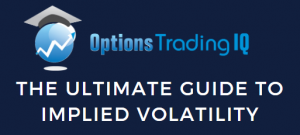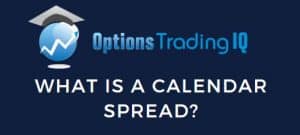

Every sophisticated portfolio in existence—whether run by a pension fund, robo-advisor, or high-net-worth wealth manager—rests on a set of core principles.
These principles form the backbone of Modern Portfolio Theory (MPT).
Contents
-
-
-
- Introduction
- The Core Idea: It’s About Portfolios, Not Individual Assets
- Expected Return And Standard Deviation
- Correlation: The Magic Ingredient
- The Efficient Frontier: Where Optimization Lives
- The Capital Market Line And The Risk-Free Asset
- The Sharpe Ratio: Measuring Risk-Adjusted Return
- Assumptions (And Critiques) of MPT
- How MPT Informs Real-World Investing Today
- Final Thoughts: MPT As The Investor’s Compass
-
-
Introduction
Devised by Nobel Laureate Harry Markowitz in 1952, MPT revolutionized investing by quantifying the benefits of diversification.
It was the first time investors could visualize the relationship between risk and return and strategically allocate capital instead of simply chasing returns.
But MPT isn’t just a dusty academic concept.
It’s an enduring framework that still guides how portfolios are built, managed, and evaluated today.
Let’s explore the foundational elements of Modern Portfolio Theory—and why they matter more than ever in a volatile and uncertain world.
The Core Idea: It’s About Portfolios, Not Individual Assets
Before MPT, investors tended to evaluate assets in isolation.
If a stock had good prospects, they’d buy it.
If a bond paid a solid yield, they’d hold it.
However, this siloed thinking ignored the interaction between assets.
Markowitz’s breakthrough was this: It’s not individual assets that matter—it’s how they behave together.
A portfolio’s risk (volatility) isn’t the average of its parts.
It depends on how correlated those assets are.
Suppose you blend non-correlated (or, better yet, negatively correlated) assets.
In that case, you can build a portfolio with lower risk and better returns than any holding could offer.
Expected Return And Standard Deviation
At the heart of MPT are two core metrics:
- Expected return: The mean return of a portfolio over time.
- Standard deviation: A measure of how much returns deviate from that average—essentially, the portfolio’s volatility or risk.
MPT assumes that investors are risk-averse: they prefer less risk for a given level of return.
Therefore, the optimal portfolio is the one that minimizes risk for a given return or maximizes return for a given risk.
This leads us directly to the concept of the Efficient Frontier, which we covered in depth in a previous article.
Correlation: The Magic Ingredient
Diversification only works when assets don’t move in perfect lockstep.
If two assets are highly correlated, holding both offers little benefit.
However, if their prices move in opposite or uncorrelated ways, combining them can dramatically lower volatility without sacrificing expected return.
This is where MPT shines.
It provides a mathematical framework to combine assets with varying correlations to produce an optimal portfolio.
Even if every asset in your portfolio has risk, the portfolio itself can be constructed to be surprisingly resilient.
The Efficient Frontier: Where Optimization Lives
By plotting different combinations of assets on a graph of risk (x-axis) vs return (y-axis), MPT helps us visualize all possible portfolios.
- Portfolios inside the curve are inefficient.
- Portfolios on the curve are optimal.
- The curve itself is the Efficient Frontier—a portfolio set that delivers the best risk-return trade-offs.
This visual framework allows investors to make informed decisions based on their risk appetite and return goals.
Whether you’re a retiree prioritizing preservation or a young professional seeking growth, your optimal portfolio lies somewhere along this frontier.
The Capital Market Line And The Risk-Free Asset
Building on MPT, the Capital Market Line (CML) introduces a third asset: the risk-free rate (typically short-term government bonds).
This allows for leveraged or conservative portfolios by blending the risk-free asset with the market portfolio (the optimal portfolio of risky assets).
The CML shows that you can improve a portfolio’s Sharpe Ratio—return per unit of risk—by either:
- Lending (adding more risk-free assets to lower volatility) or
- Borrowing (using leverage to pursue higher returns)
This concept underpins how robo-advisors and wealth managers adjust portfolios based on client risk profiles.
The Sharpe Ratio: Measuring Risk-Adjusted Return
Created by William Sharpe in the 1960s, the Sharpe Ratio builds directly on MPT.
It’s calculated as:
Sharpe Ratio = (Portfolio Return – Risk-Free Rate) / Portfolio Standard Deviation
This metric helps investors evaluate whether a portfolio is compensating them appropriately for the risk taken.
A high Sharpe Ratio implies superior risk-adjusted performance.
It’s a key measure for comparing strategies, asset managers, and funds.
Assumptions (And Critiques) Of MPT
While powerful, Modern Portfolio Theory is built on some assumptions that don’t always hold in the real world:
- Returns are normally distributed: Markets often experience fat tails and extreme events.
- Investors are rational: Behavioral finance shows we’re often anything but.
- Risk is volatility: Many investors care more about downside risk than total variance.
- Inputs are stable: Correlations, volatilities, and expected returns change over time.
Despite these limitations, MPT remains a foundational framework.
In fact, many newer models—like Post-Modern Portfolio Theory and Black-Litterman—are refinements of MPT, not rejections.
How MPT Informs Real-World Investing Today
Even if you’ve never formally studied MPT, you’ve probably used its ideas:
- Target-date funds: Glide paths are designed based on MPT principles.
- Robo-advisors: Most use algorithmic versions of efficient frontier modeling.
- Wealth managers: Use portfolio optimization software grounded in MPT math.
- DIY investors: Benefit from asset allocation strategies that trace their logic back to MPT.
What is the concept of rebalancing to maintain an efficient allocation?
Pure MPT.
What is the reason you hold international equities or gold for diversification?
MPT again.
It’s the invisible hand guiding intelligent portfolio design.
Final Thoughts: MPT As The Investor’s Compass
Modern Portfolio Theory gave investors a map.
It taught us that risk and return are not enemies—they’re partners to be balanced.
It offered a method to turn gut instincts into a structured strategy.
And decades later, it still informs how the world’s best portfolios are built.
Whether you’re managing $10,000 or $10 million, the insights of MPT can help you make better decisions, reduce emotional investing, and build a more resilient path to long-term wealth.
It doesn’t promise perfection.
But it provides clarity.
And in a noisy, volatile world—that’s exactly what smart investors need.
We hope you enjoyed this article on the foundations of Modern Portfolio Theory.
If you have any questions, send an email or leave a comment below.
Trade safe!
Disclaimer: The information above is for educational purposes only and should not be treated as investment advice. The strategy presented would not be suitable for investors who are not familiar with exchange traded options. Any readers interested in this strategy should do their own research and seek advice from a licensed financial adviser.










